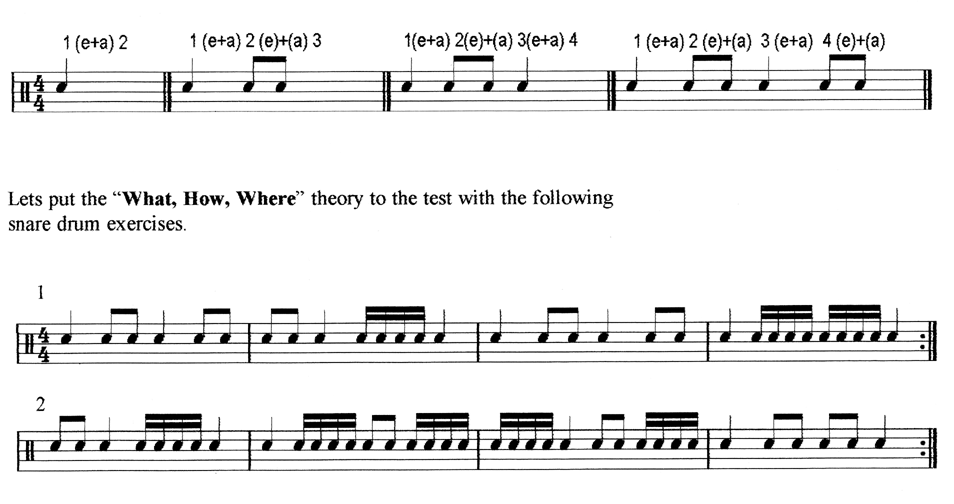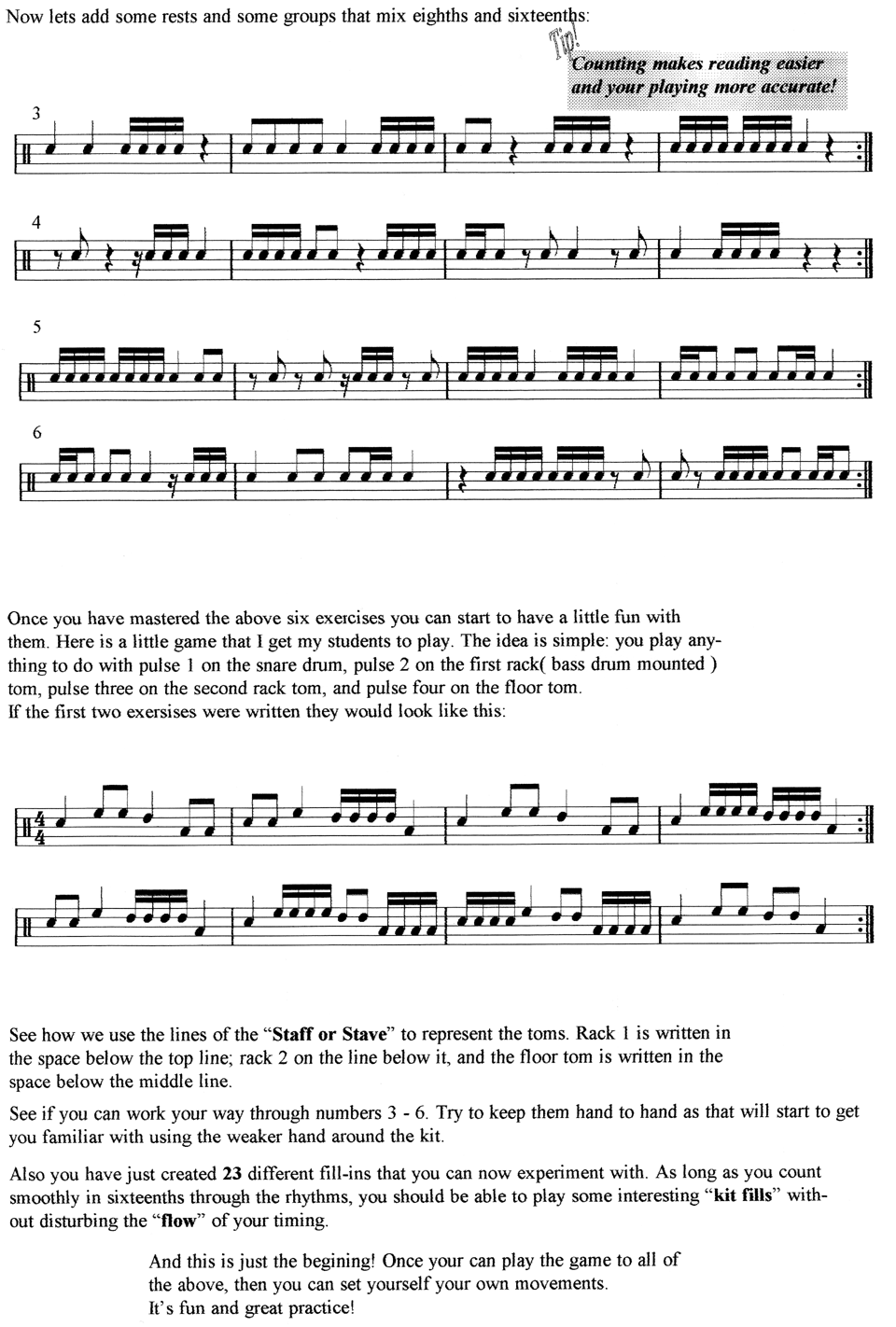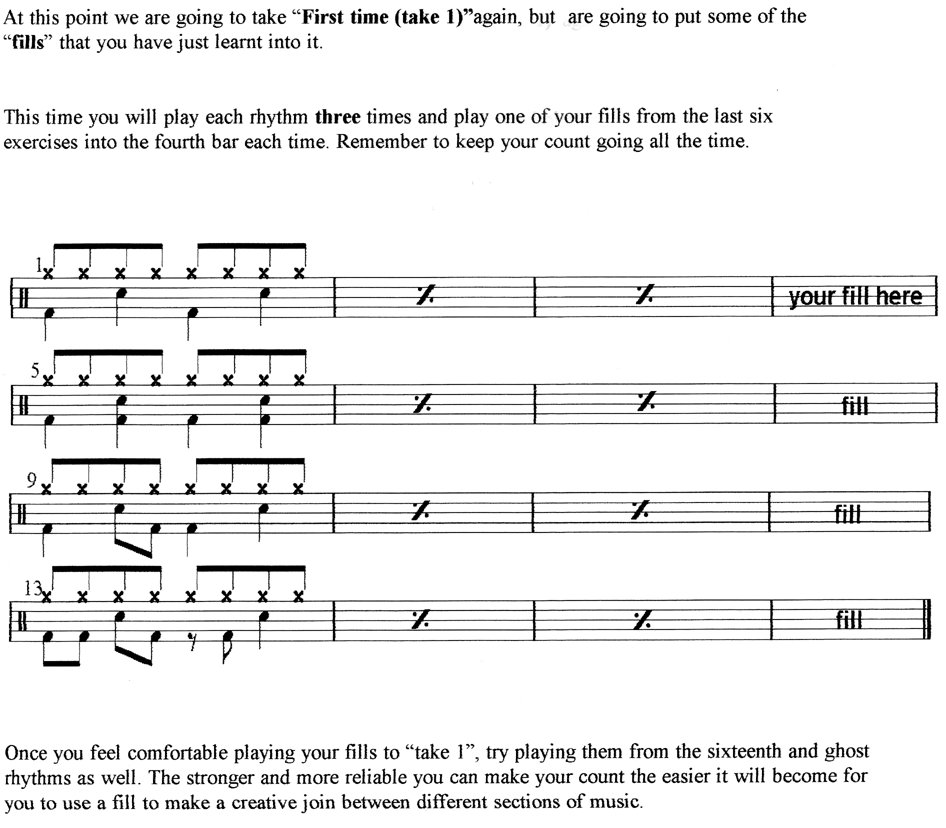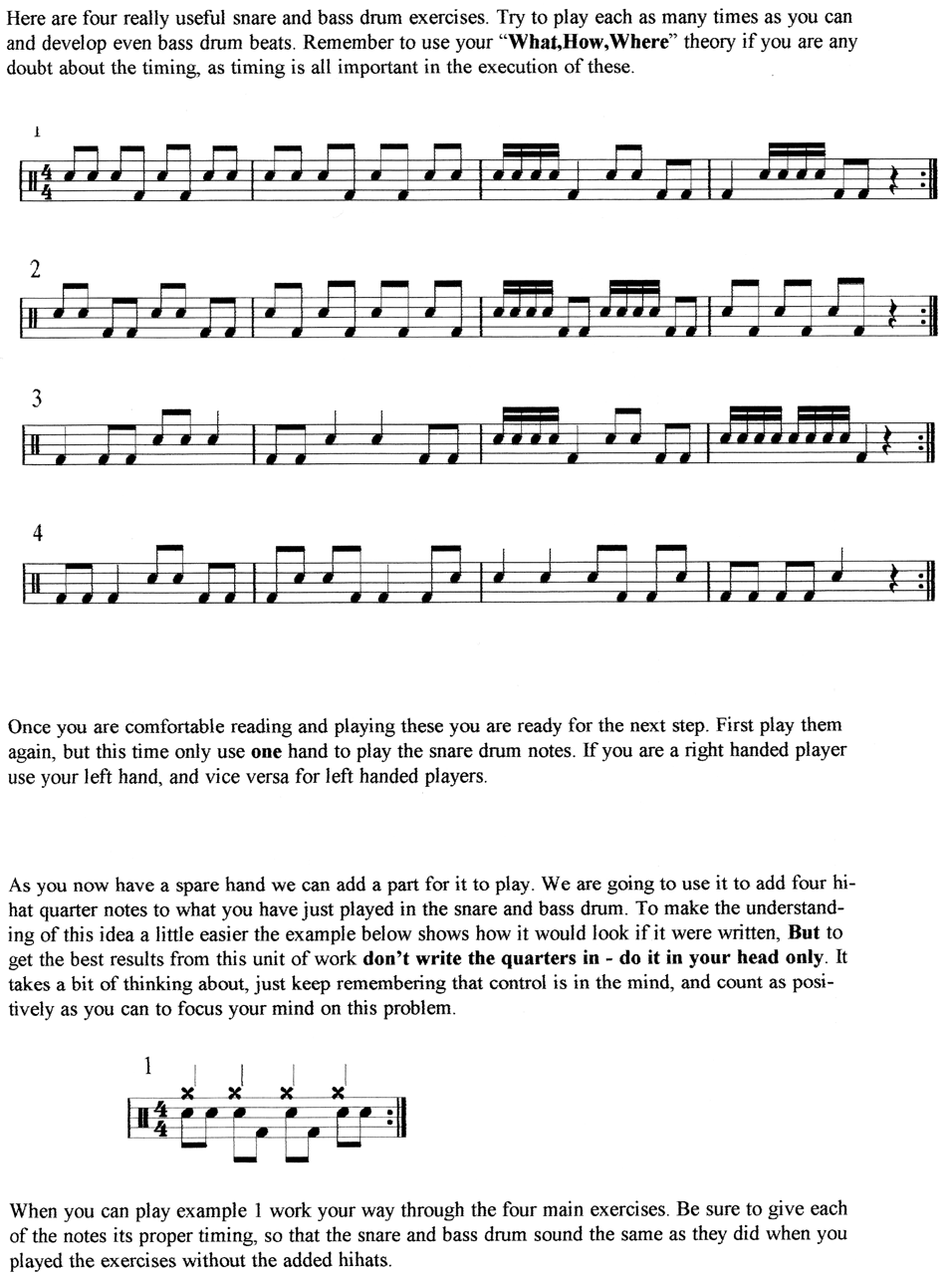Navigate to:

Navigate to: |
HOME | 
| BACK TO TUITION PAGE |
|---|
The skill of drumming is making the hands and feet do what our brains want them to do. Now its time to take what you have learned about Quarters,Eighths and Sixteenths and use them to gain that essential control.
In the following exercises we will use our sixteenth note count to make our bodies get more used to obeying the will of our mind. The key to this success is three questions that if you ask yourself any time you get stuck, will provide the answers:
For example if "What" reveals that our first note is a quarter note, we know that it will be played on beat "1". The "How" will tell us that we should count it as "1e+a", as a quarter note always has the value of four sixteenth positions. The "Where" then allows us to accurately predict the future. As the time of "1e+a" has been used by the first quarter note, the next available position has to be beat "2"! Even though we don't yet know what the next information will be, we can accurately predict that either a note or a rest has to be on beat "2".
Let us examine the first bar of exercise 1 (below). First we must identify "What" type of note it is. As it is a solid base with a stem it is a quarter note, and being the first information it will fall on beat "1". We know that a quarter note is worth four positions of our sixteenth note count - in this case "1e+a" is the answer to "How should it be counted". So although we only play one note at pulse "1" we must count the "e+a" after it. (In the examples below I have put brackets around the positions that have to be counted but not played on). Where should the next note be? Answer: The next available position after "1e+a" = "2". In the following demonstration you can see how the first bar of exercise 1 develops pulse by pulse using the "What,How,Where theory".





